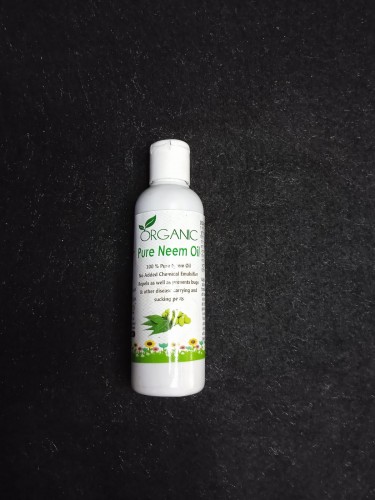off
Neem oil is a natural product derived from the seeds of the neem tree (Azadirachta indica). It has been widely used in traditional medicine and agriculture for centuries. Neem oil is known for its various benefits for plants, and here are some of the key advantages: Insect Repellent: Neem oil acts as a natural insect repellent, helping to control and deter a wide range of pests such as aphids, whiteflies, mites, caterpillars, and beetles. It disrupts the feeding and reproductive cycles of insects, ultimately reducing their population. Antifungal Properties: Neem oil has antifungal properties that make it effective against various plant fungal diseases, including powdery mildew, rust, and leaf spot diseases. It can prevent the growth and development of fungal spores, protecting plants from infections. Antibacterial Effects: Neem oil has antibacterial properties that can help control bacterial diseases in plants. It inhibits the growth of bacteria and provides a protective barrier against infections. Nematode Control: Neem oil has been shown to have nematicidal properties, helping to control nematodes in the soil that can harm plant roots. It disrupts the life cycle of nematodes, reducing their population. Stimulates Plant Growth: Neem oil contains various nutrients that can promote healthy plant growth. It enhances nutrient absorption by plants, leading to improved overall plant vigor. Systemic Action: Neem oil can be absorbed by plant tissues, providing systemic protection against pests and diseases. This systemic action makes it effective for long-term pest and disease management. Biodegradable and Environmentally Friendly: Neem oil is biodegradable and does not harm beneficial insects, birds, or other non-target organisms. It is considered an environmentally friendly option for pest and disease control. Safe for Humans and Animals: Neem oil is generally safe for humans and animals, as it is non-toxic and has low environmental impact when used properly. When using neem oil on plants, it's important to follow application instructions and dosage recommendations, as excessive use may lead to phytotoxicity (harm to the plant). Additionally, it's advisable to perform a patch test on a small area of the plant before widespread application to ensure compatibility.

